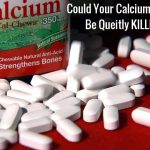Collagen – Beyond the Beauty Benefits
Type I: Makes up the fibers found in connective tissues of the skin, bone, teeth, tendons and ligaments.
Type II: Round fibers found in cartilage.
Type III: Forms connective tissues that give shape and strength to organs, such as the liver, heart, kidneys, etc.
Type IV: Forms sheets that lie between layers of cells in the blood vessels, muscles, and eye.
In 1989, the eminent American scientist and two-time Nobel Prize winner, Linus Pauling, announced a breakthrough in how we view and treat heart disease. In “A Unified Theory of Human Cardiovascular Disease,” Linus Pauling announced that the deposits of plaque seen in atherosclerosis were not the cause of heart disease, but were actually the result of our bodies trying to repair the damage caused by long-term vitamin C deficiency. In essence, Pauling believed that heart disease is a form of scurvy, and plaque is the body’s attempt to reinforce and patch weakened blood vessels and arteries that would otherwise rupture. Pauling also showed that heart disease can be prevented or treated by taking vitamin C and other supplements.
In addition to taking vitamin C to prevent atherosclerosis, Pauling recommended a combination of vitamin C and the amino acids lysine and proline to help remove existing plaque while strengthening weak and damaged arteries. As mentioned previously, the body produces collagen from lysine and proline. Pauling reasoned that by increasing concentrations of lysine and proline in the blood, Lp(a) molecules would bind with the free lysine, rather than with the lysine strands exposed by the cracks in blood vessels.
How Much Vitamin C Does it Take to Prevent Atherosclerosis?
Linus Pauling often recommended 3,000 to 5,000 mg per day as an effective dose. Anecdotal reports from patients using the Pauling Therapy indicate that rapid recovery is frequently the rule, not the exception, allowing many people to avoid open heart surgery and angioplasty.
Pauling Therapy for the Reversal of Heart Disease
- Vitamin C: to bowel tolerance – as much as you can take without diarrhea. For most people this will be in the range of five to ten grams (5,000-10,000 mg.) each day. Spread this amount into two equal doses 12 hours apart. (Vitamin C prevents further cracking of the blood vessel wall – the beginning of the disease.)
- L-Proline: 3 grams twice per day (acts to release lipoprotein(a) from plaque formation and prevent further deposition of same).
- L-Lysine: 3 grams twice each day (acts to release lipoprotein(a) from plaque formation and prevent further deposition of same).
- Co-enzyme Q10: 90-180 mg. twice per day (strengthens the heart muscle).
- L-Carnitine: 3 grams twice per day (also strengthens the heart muscle).
- Niacin: Decreases production of lipoprotein(a) in the liver. Inositol hexanicotinate is a form of niacin which gives less of a problem with flushing and therefore allows for larger therapeutic doses. Begin with 250 mg. at lunch, 500 mg. at dinner and 500 mg. at bedtime the first day; then increase gradually over a few days until you reach four grams per day, or the highest dose under four grams you can tolerate. Be sure to ask your doctor for liver enzyme level tests every two months or less to be sure your liver is able to handle the dose you are taking.
- Vitamin E: 800-2400 IU per day. (Inhibits proliferation of smooth muscle cells in the walls of arteries undergoing the atherosclerotic changes.)







Leave a Reply